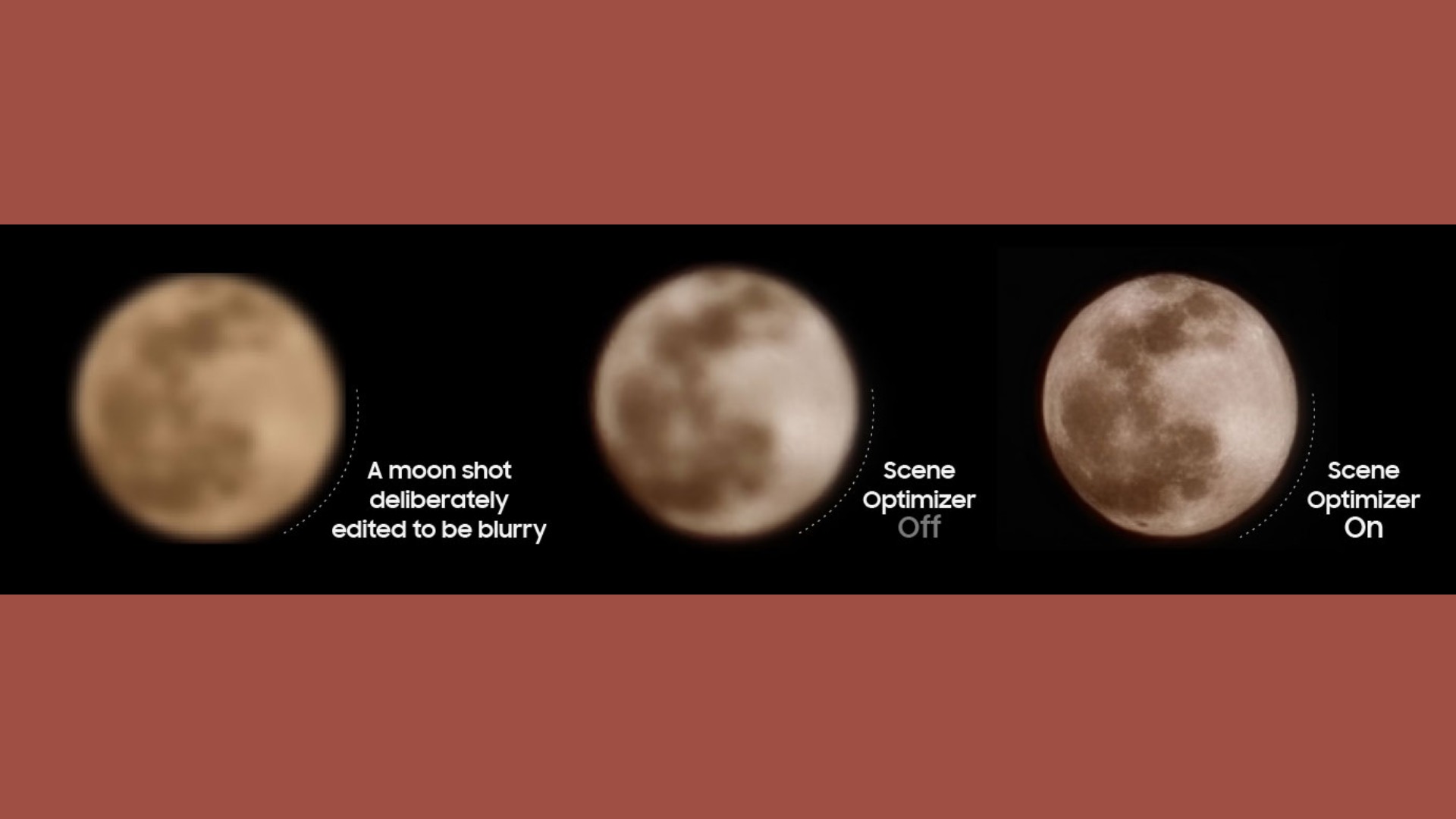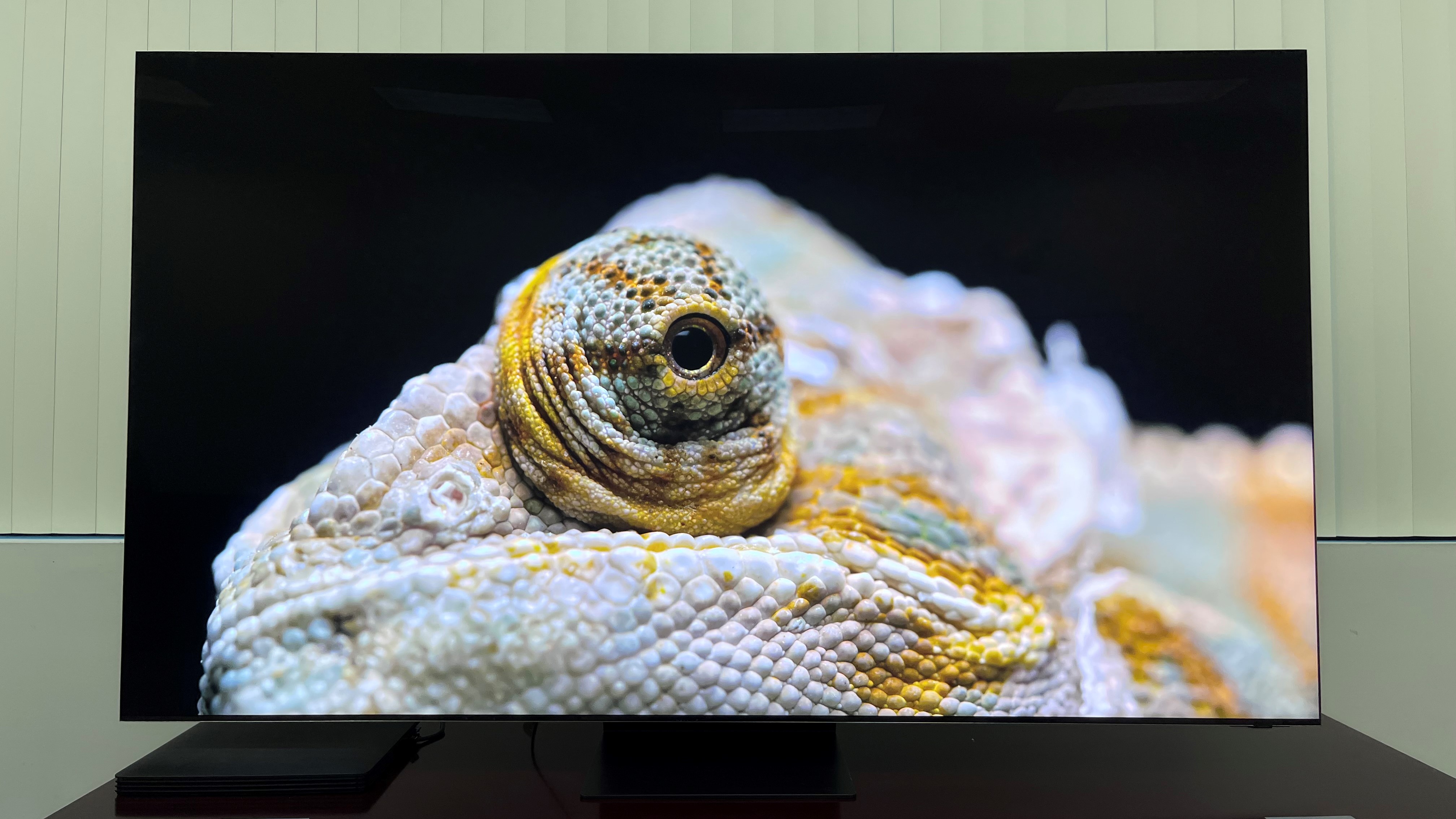Calm down: Samsung Galaxy S23 Ultra’s 'fake moon' tech has been in 4K TVs for years
The image enhancement moonshot has paid off

The Samsung Galaxy S23 Ultra is one of the best phones you can buy, but there’s been some recent noise online about the AI-driven image enhancement technology it uses to create detailed pictures of the moon.
To be specific, commenters on a Reddit thread seemed surprised that, when the Galaxy S23 Ultra’s Scene Optimizer feature is engaged, it is using AI to deliver moon pictures that are, in Samsung’s own words, “based on images taken from our view from the Earth” instead of ones simply captured using the phone’s lens and imaging sensor.
Hello, and welcome to the world of tech circa-2023.
The best 4K TVs have harnessed AI for image processing and enhancement for many years now, and 8K TVs, for which there is little in the way of native content at the moment, apply it even more aggressively. Top TVs from brands including Samsung and LG are now even using AI to “re-master” older programs by adding high dynamic range effects on a scene-by-scene basis, and they can enhance HDR tone mapping in a similarly dynamic, AI-driven manner.
Simply put, these companies are taking advantage of the latest cutting-edge tech to ensure their TVs deliver the best possible picture quality, and that’s something you’ll pay handsomely for when you buy a high-end set.
Samsung has been transparent about its Neural Quantum Processor's use of AI to enhance images, calling it an “upgrade” that “results in a better-than-the-theater home theater experience.” Those statements alone indicate that any notion of fidelity to the original image projected at the theater has been left at the curb, and the company believes it can deliver something that will look even better.
Sony, too, has been upfront about AI contributions to the Cognitive Processor XR in its TVs, which doesn’t just contribute to displaying movies and TV, but will “analyze the content and recreate it the same way humans see and hear in the real world.” Some of that is just a hyped-up way of describing 4K upscaling and noise reduction, but there are other more sophisticated processes like identifying a focal point in the image and then using depth enhancement to emphasize it.
Sony is also a company that long ago coined the term "Reality Creation" to describe the image processing going on in its TVs, with 4K upscaling that “accesses a vast database to intelligently recreate lost texture and detail.” If that’s not an indication that the company leans on AI to deliver pictures that look superior to the real thing, I don’t know what is.

Better than real is the new reality
I’ll admit to once being skeptical about the use of AI-based image enhancement in TVs. At a Samsung TV event a few years back when the company was first rolling out its 8K models, it went to great lengths to promote the advantage of AI processing using neural networks, and demonstrated how the tech could be used to cleanly upscale 4K programs to 8K resolution.
The images displayed on Samsung’s 8K TVs at the event did look highly realistic from a normal TV viewing distance, but when I moved closer up to the screen, I could easily see that fine details were artificially created: they had an unnatural-looking impasto quality, like brushstrokes in an Impressionist landscape painting.
Having recently had a chance to do a hands-on test of the new-for-2023 Samsung QN900C 8K Neo QLED TV, one of the things I was careful to evaluate was the set’s upscaling of 4K images. Same as with that earlier demo, pictures looked finely detailed, more so than what I’d seen from the other two Samsung 4K TVs, the S95C OLED and QN95C Neo QLED, I tested that day. The set’s Neural Quantum Processor 8K was clearly working hard to use the millions more pixels (8K TVs have approximately 33 million pixels, or four times as many as a 4K TV) in its display to advantage, and the result was compelling.

Of course, I made a point of going up-close to the screen, and this time around fine details looked natural and well integrated as opposed to being slapped on in painterly style. Interestingly, when I compared actual 8K-resolution videos streamed from YouTube to upscaled 4K content on the TV, I found that the real 8K clips actually looked less detailed.
For me, this was an a-ha! moment, one that not only drove home the benefits of 8K TVs, but the importance of image processing and AI-driven picture enhancement. The upscaled 8K not only looked real, it looked better than real, while at the same appearing completely natural. I had witnessed a battle between reality and an AI version of the same, and AI had unquestionably come out on top.
I can understand having a romanticized idea of photography, one that maintains that a camera should accurately reflect what’s seen in the real world. But we’ve long since transitioned from living in reality to hyperreality. Anyone viewing on a modern TV is seeing images enhanced by AI to look their best – I don’t think it's a problem for Samsung to use the same tech to bring you otherwise-impossible-to-capture smartphone photos of the moon.
Get daily insight, inspiration and deals in your inbox
Sign up for breaking news, reviews, opinion, top tech deals, and more.

Al Griffin has been writing about and reviewing A/V tech since the days LaserDiscs roamed the earth, and was previously the editor of Sound & Vision magazine.
When not reviewing the latest and greatest gear or watching movies at home, he can usually be found out and about on a bike.